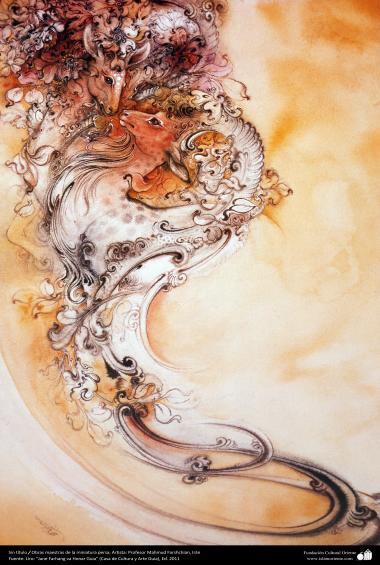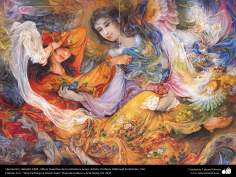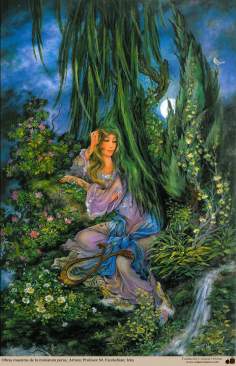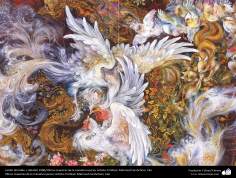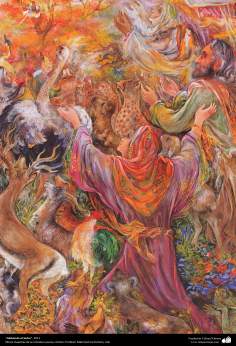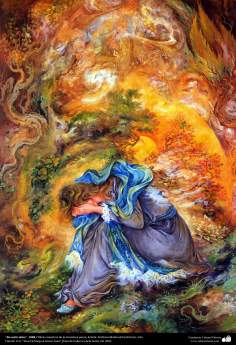-
Islamic Art
-
Arquitecture
-
Islamic Arquitecture
- Arte & Islamic Architecture in painting
- Islamic mosaics and decorative tile (Kashi Kari)
- Islamic Mogarabas (Moqarnas Kari)
- Arte con espejos incrustados (aine kari)
- City of Isfahan - Iran
- City of Mashhad - Iran
- City of Shiraz - Iran
- From other cities of Iran
- Mecca and Medina – Saudi Arabia
- City of Agra - India
- Persian Preislamic Arquitecture
-
Islamic Arquitecture
-
Persian Miniature
- Miniatures by Prof. M. Farshchian
- miniatures by Hayy Agha Emami
- Miniatures by Prof. Husein Behzad
- Miniatures by Professor M. Mehregan
- Miniatures by different artists
- Miniatures of the Book “Muraqqa-e-Golshan
- Miniatures of books of Poet Sadi, “Bustan”, “Golestan” and “Colections”
- Miniature of the books of Poet Nezami Ganjavi
- Miniatures of different books
- Miniatures of the Book “Zafar Name Teimuri”
- Miniatures of different editions of Shahname by Ferdowsi
- Miniature in Mural
- Tazhib (Ornamentation of valuables pages and texts)
-
Islamic Calligraphy
- Kufic Calligraphy – Kufic Style
- Islamic Calligraphy – “Diwani” Style
- Islamic Calligraphy – “Naskh” Style
- Islamic Calligraphy – “Nastaliq” style
- Islamic Calligraphy – “Muhaqqeq” and “Roga” Styles
- Islamic Calligraphy “Zuluz” Style
- Islamic Calligraphy – “Tawqi” style
- Calligraphy of Bismillah
- Quranic Calligraphy
- Illustrative Calligraphy
- Antique editions of the Holy Quran from early times to XIII hiyri (XIX d.C).
-
Handicrafts
- Handicrafts – traditional blocking (stamping) (Chape Qalamkar)
- Handicraft – Marquetry and Decoration of objects (Jatam Kari)
- Handicraft – Enamel (Mina Kari)
- Handicraft – Textile Art – Persian Carpets
- Persian Handicraft – Bone Painting
- Handicraft – Engraved in metal (Qalam Zani)
- Handicraft – Taracea (Marquetry)
- Weapons and decorated enamelware
- Paintings
- Islamic Pottery- Islamic ceramics
-
Arquitecture
- Muslim Woman
- Holy Places of Islam
-
Poster
- Caricature
Miniature signifie un affichage plus petit et est abrégé du mot français « minimum naturel » et qui était commun en persan moderne de l’époque Qajar. La fonction la plus importante de la miniature était l'illustration. Elle illustrait un texte littéraire, le rendant plus agréable et facile à comprendre. La miniature s'est développée en un mariage des langages poétiques et artistiques et parvint à un accord profond et sincère avec la poésie. Mahmoud FARSHCHIAN (né le 4 Bahman(Date Persique) 1308 à Ispahan, Iran), le peintres iranien qui avait un effet notable sur le processus de la peinture traditionnelle iranienne et d'autres arts traditionnels. Certaines de ses œuvres ont été attribués aux ambassadeurs et ministres des pays étrangers par les ministre iraniens des Affaires étrangères. Farshchian est le fondateur de son école dans la peinture persane qui adhère à la forme classique .


